Each paper tray is loaded in the same way.
Various sizes of paper can be loaded in Trays 2 and 3 by adjusting the positions of side fences and end fence. You can change paper sizes as shown below.
In the following example procedure, paper is loaded into Tray 2.
![]()
Check that the paper edges are aligned at the right side.
If a paper tray is pushed vigorously when putting it back into place, the position of the tray's side fences may slip out of place.
When loading a low number of sheets, be sure not to squeeze the side fences in too tightly. If the side fences are squeezed too tightly against the paper, the edges may crease, the paper may misfeed, or if it weighs between 52.3–65.9 g/m2 (14.0–17.9 lb. Bond), it may wrinkle.
![]() Check that paper in the paper tray is not being used, and then pull the tray carefully out until it stops.
Check that paper in the paper tray is not being used, and then pull the tray carefully out until it stops.
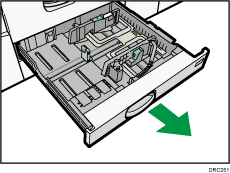
![]() Remove paper if loaded.
Remove paper if loaded.
![]() Release the lock on the side fence.
Release the lock on the side fence.
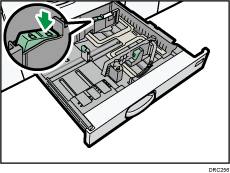
![]() Loosen the screws holding the side fences in position.
Loosen the screws holding the side fences in position.
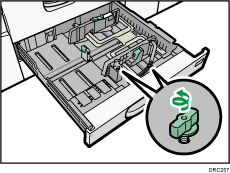
![]() While pressing down the release lever of the side fence, slide the side fences outward.
While pressing down the release lever of the side fence, slide the side fences outward.
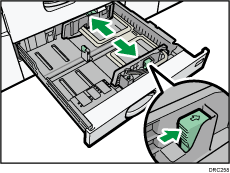
![]() While pinching the release lever of the end fence, slide the end fence outward.
While pinching the release lever of the end fence, slide the end fence outward.
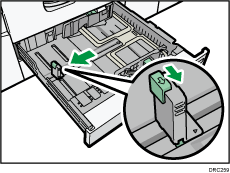
![]() Square the paper and load it print side down.
Square the paper and load it print side down.
Do not stack paper over the limit mark.
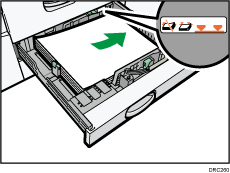
![]() Align the end and side fences gently against the paper you loaded.
Align the end and side fences gently against the paper you loaded.
Make sure that there is no space between the paper and the side fences or end fence.
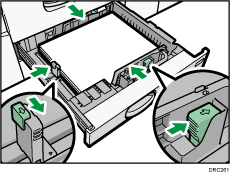
![]() Turn the screws slowly to fasten it in place.
Turn the screws slowly to fasten it in place.
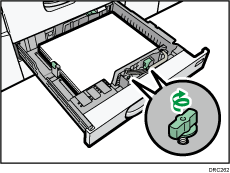
![]() Re-lock the side fences.
Re-lock the side fences.
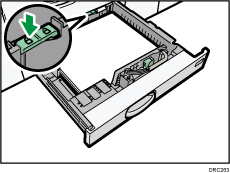
![]() Carefully push the paper tray fully in.
Carefully push the paper tray fully in.
![]()
You can load envelopes in Trays 2 and 3. When loading envelopes, place them in the correct orientation. For details, see Envelopes.
